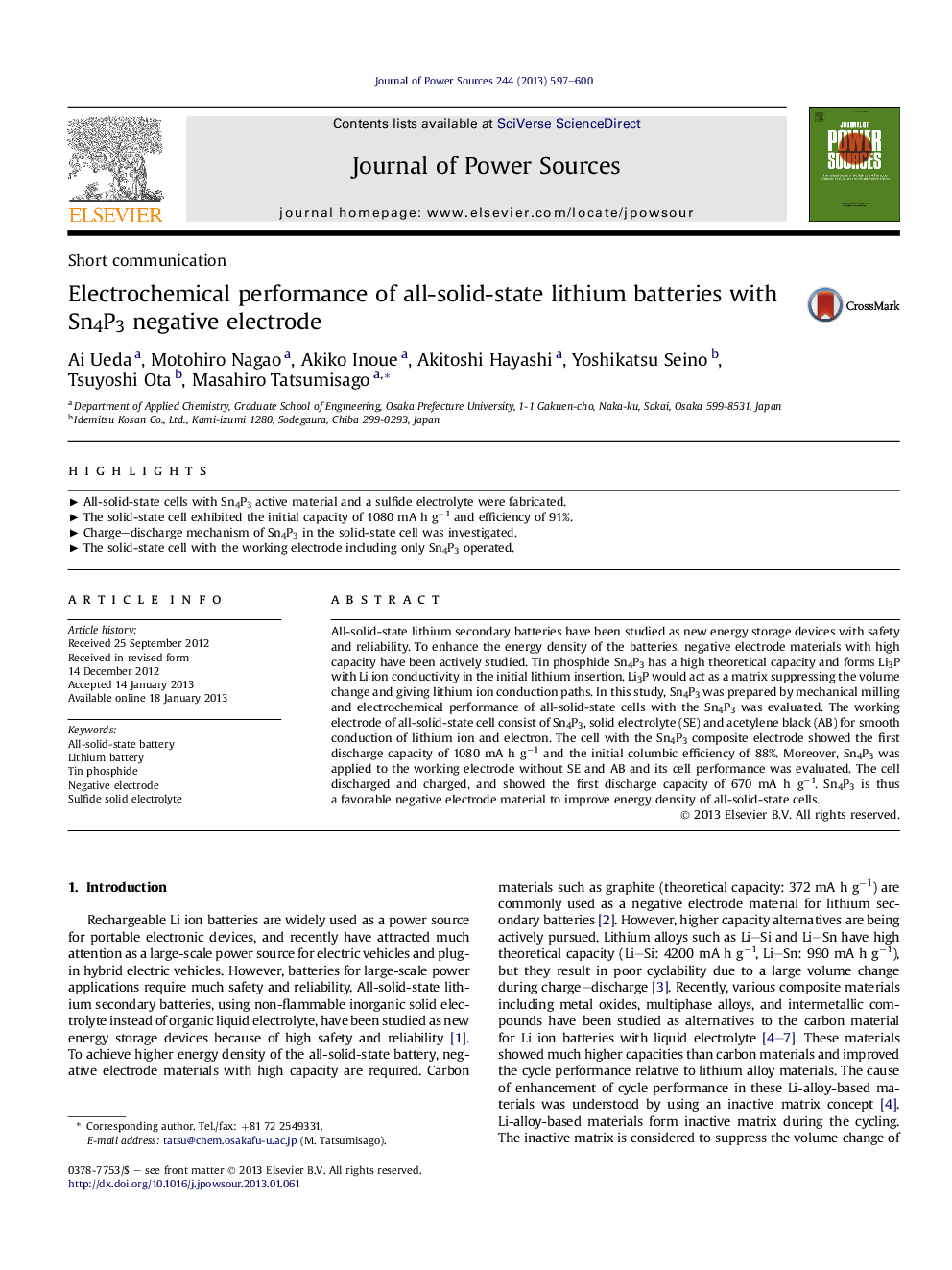| Article ID | Journal | Published Year | Pages | File Type |
|---|---|---|---|---|
| 1287524 | Journal of Power Sources | 2013 | 4 Pages |
All-solid-state lithium secondary batteries have been studied as new energy storage devices with safety and reliability. To enhance the energy density of the batteries, negative electrode materials with high capacity have been actively studied. Tin phosphide Sn4P3 has a high theoretical capacity and forms Li3P with Li ion conductivity in the initial lithium insertion. Li3P would act as a matrix suppressing the volume change and giving lithium ion conduction paths. In this study, Sn4P3 was prepared by mechanical milling and electrochemical performance of all-solid-state cells with the Sn4P3 was evaluated. The working electrode of all-solid-state cell consist of Sn4P3, solid electrolyte (SE) and acetylene black (AB) for smooth conduction of lithium ion and electron. The cell with the Sn4P3 composite electrode showed the first discharge capacity of 1080 mA h g−1 and the initial columbic efficiency of 88%. Moreover, Sn4P3 was applied to the working electrode without SE and AB and its cell performance was evaluated. The cell discharged and charged, and showed the first discharge capacity of 670 mA h g−1. Sn4P3 is thus a favorable negative electrode material to improve energy density of all-solid-state cells.
► All-solid-state cells with Sn4P3 active material and a sulfide electrolyte were fabricated. ► The solid-state cell exhibited the initial capacity of 1080 mA h g−1 and efficiency of 91%. ► Charge–discharge mechanism of Sn4P3 in the solid-state cell was investigated. ► The solid-state cell with the working electrode including only Sn4P3 operated.
